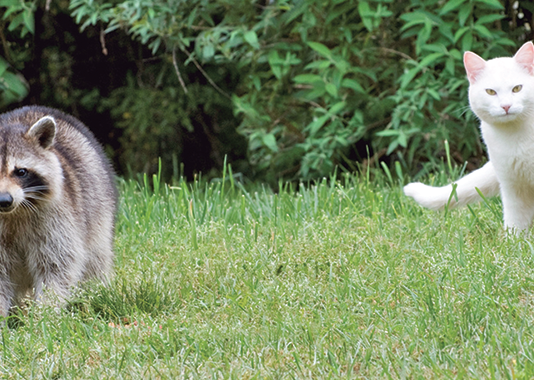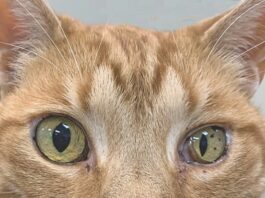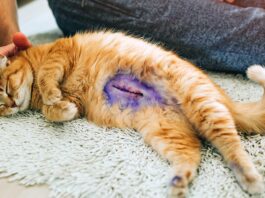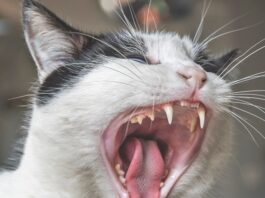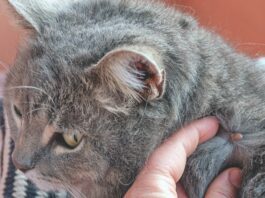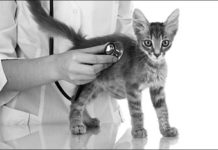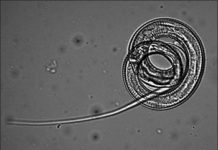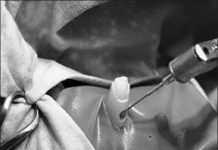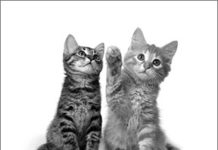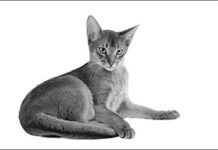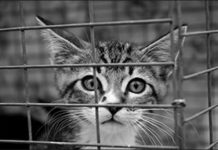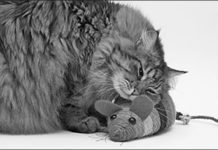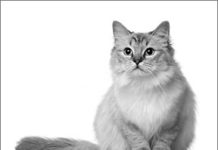Essentials of the First Kitten Exam
Kitten season — an increase in litters and adoptable pets — seems to span three seasons, starting in spring and extending into fall. If you’re the proud owner of a new kitty — congratulations!
Half-foot-long Worms Found in 2 Cats
New research at Cornell University College of Veterinary Medicine has bolstered advice to keep cats indoors, allowing them outside only when they can be supervised to protect them from parasitic infection.
Be on the Lookout for Nail Injuries
Owners, take note: At some point in time, your cat might tear a nail. It’s one of the top 10 pet accidents requiring veterinary care, according to a review of thousands of claims by Veterinary Pet Insurance. And it can happen in a flash.
Study Seeks to Identify Signs of Heart Disease
Human medicine has made strides in identifying clinical risk factors in heart disease. Now veterinary research hopes to do the same for hypertrophic cardiomyopathy in cats. It’s the most common feline heart disease and cause of cardiovascular death.
Saving Diseased and Damaged Teeth
Root canal treatment for cats might sound far-fetched, but they’re performed at university hospitals and specialty practices around the country to save damaged and diseased teeth that might otherwise be extracted. In fact, newly available techniques and equipment in veterinary medicine have advanced the field of endodontics — the study and treatment of dental pulp — to the point where root canal treatment success rates in pets equal those in humans.
Those Startling Reverse Sneezes?
A reverse sneeze looks alarming. The cat may stand still with his elbows out and eyes open wide while rapidly snorting inward and extending his neck. An owner might panic, thinking the cat is suffocating.
Outwitting Animal-to-Owner Diseases
Cats can harbor a variety of zoonotic diseases — those that can be transmitted to people. Some of the diseases are rare, while others are quite common. Although we are aware of many of these diseases, more continue to be discovered, thanks to improvements in technology and to the dedicated work of researchers in both the human medical and veterinary fields.
When Visits to the Litter Box Increase
Cats and people suffer many of the same illnesses, a common one being urinary tract infections (UTIs). In women, they may account for more than 6 million visits to doctors in the United States each year. Similarly, Veterinary Pet Insurance reports that urinary bladder infections — the urinary bladder is part of the urinary tract — were the most common medical condition affecting cats in claims it processed in 2012.
Those Startling Reverse Sneezes?
A reverse sneeze looks alarming. The cat may stand still with his elbows out and eyes open wide while rapidly snorting inward and extending his neck. An owner might panic, thinking the cat is suffocating.
A Breakthrough Decades in the Making
Feline infectious peritonitis ranks as one of the deadliest diseases affecting cats — it’s the leading cause of death in cats under 2 years of age. Veterinary scientists have long suspected that the FIP virus (FIPV) was a lethal mutation of the feline coronavirus (FECV), a benign and common intestinal virus, but they couldn’t identify how this transformation occurred. Until now.
When the Diagnosis Is Arthritis
Arthritis creeps up on a cat with signs so subtle that they’re easy to miss: getting up more slowly from a nap, dashing after a toy mouse less often, perhaps even losing interest in leaping from the floor to the kitchen counter top.
A Promising New Test for Heart Failure
Congestive heart failure, characterized by the accumulation of fluid in the lungs and other body tissues secondary to heart disease, might appear to strike suddenly. In many cases, however, it results from a progressive underlying disease that, if detected early, can be managed to improve and extend a cat’s life.“Very often, we can help pets,” says cardiologist Bruce G. Kornreich, DVM, Ph.D., Associate Director for Education and Outreach at the Feline Health Center at the Cornell University College of Veterinary Medicine. “There are medications that can decrease congestion in lungs, may decrease the likelihood of an animal developing blood clots and can improve oxygenation of the blood.

